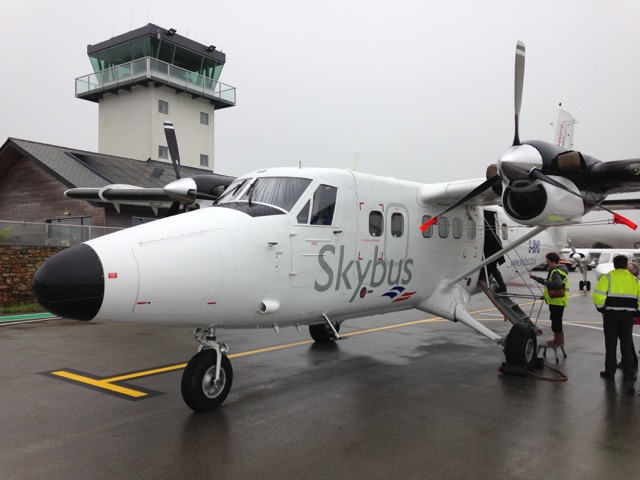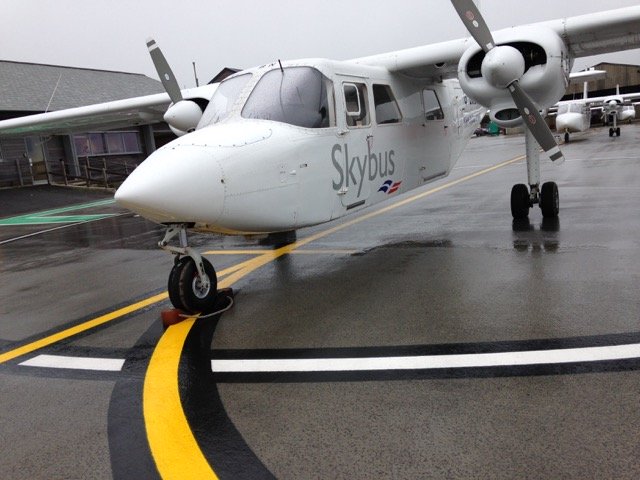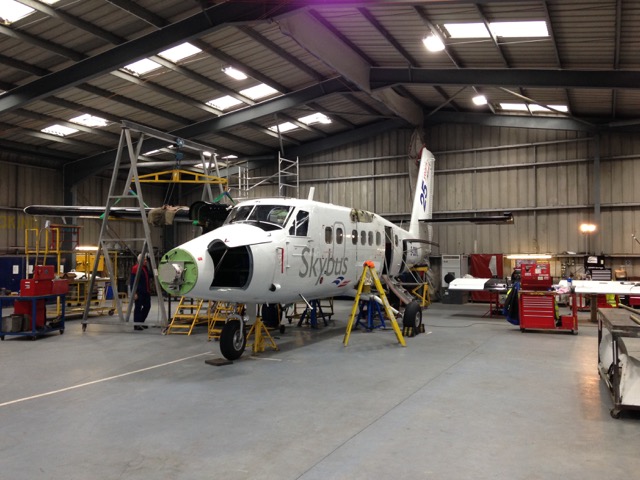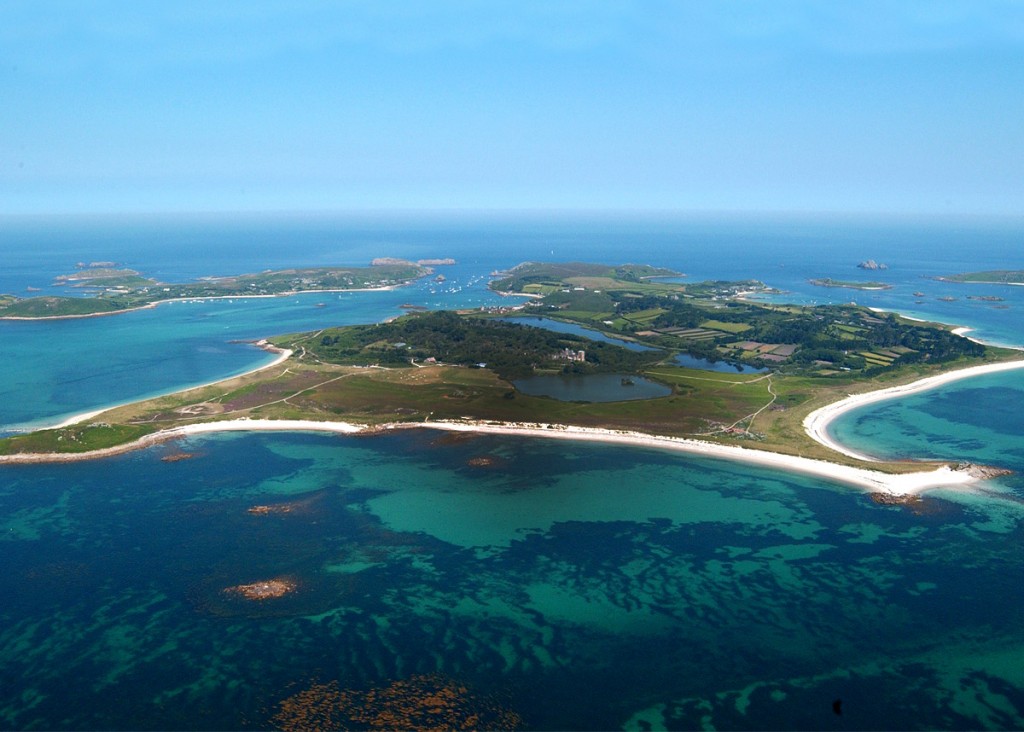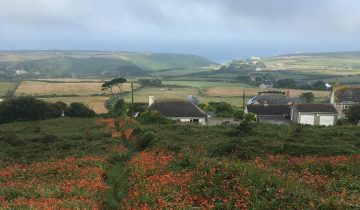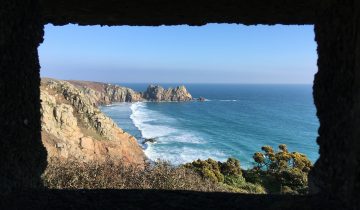For years referring to the airport as such would have raised a chuckle from anyone who’d been there.
From its opening in 1964 through to a couple of years back it was little more than a hut and some well mown grass landing strips.
Now though it’s a Category 3 airport with full time fire crews and two tarmac runways that mean they can fly all year, visibility permitting.
To put the category into perspective, Cat 3 is determined by the biggest planes to use it regularly, in this case the Twin Otter. Heathrow and the like are Cat 10s, taking the biggest beasts that fly (at least while there’s no space shuttle).
The fleet includes Islanders and Twin Otters. The former seats 7 plus two crew, and scarily doesn’t necessarily have a second pilot. The Islander’s fuselage is lower than I am tall. I know that for sure, I stood next to one earlier.
The Twin Otter though is a more grown up beast and seats 19 maximum, although The Isles of Scilly Steamship company’s Otters seat 17 with the extra space given over to the animal crate which usually carries dogs, but, like something from South America, often also caters for cats, parrots, goats and even the occasional seal.
On a windy day you want to be in the smaller plane, it’s slimmer profile means that it gets buffeted less, although it’s all relative, last time we went it was very windy coming back and more exciting than any rollercoaster.
I learned today that a plane with over 20 passenger capacity must have an air hostess which is why so many island hoppers cap their numbers at 19.
At Lands End the engineers carry out some serious maintenance tasks that you might expect to be limited to bigger airports. While I was there the team was fitting new wings, shipped over from Canada, to one of the Twin Otters – a plane with only one wing is a strange sight.
I said the airport was little more than a shed until recently. Now it’s far more grown up with a smart arrivals and departures lounge, decent café and parking for hundreds of cars. The airport handles 60,000 passengers a year and the Steamship Company transports 90,000 between the mainland and St Marys, the biggest of the Scilly Isles. The other passengers travel by Scillonian, the ferry, or fly from Newquay and Exeter.
I had the good fortune to have a tour from Chris Pearson, airport manager, and I’m not sure what the highpoint was. Was it the huge hanger where the engineers were rebuilding a plane, or was it the view to the self catering cottages at Tregiffian, and beyond out to sea, from the control tower?
The flight to the Scillies is far from cheap. The 20 minutes flight will cost you from £50 each way, or do a day trip for £50. But as Chris explained, the cost of running the two airports, the ground, and flying crew, are all the same as for a much bigger terminal, but have to be shared between just 17 passengers a flight. It puts it into perspective. And flying in over the Scillies on a clear day makes it worth every penny.
Guests flying to the Scillies who stay with The Cornish way are welcome to leave pets with us in St Just, dogs will get good exercise if they’re fit, or a warm and restful spot for the older and less active ones.
